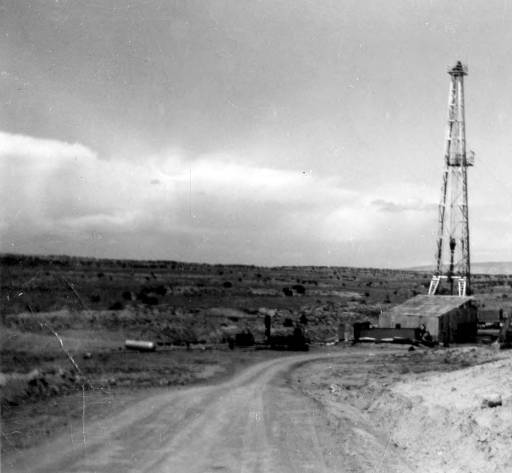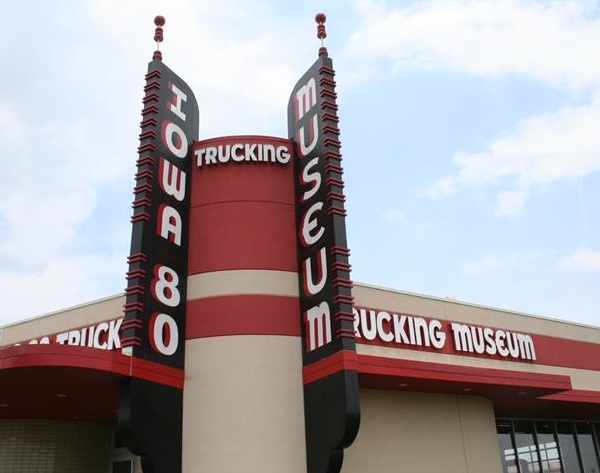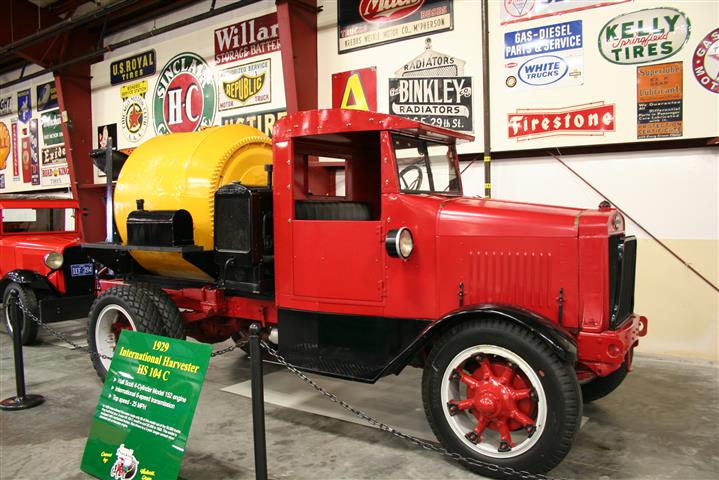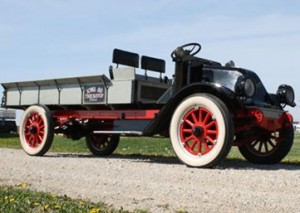by Bruce Wells | Sep 9, 2025 | Petroleum Pioneers
Deeper wells launched Utah’s petroleum industry in 1948.
After decades of expensive failed exploration attempts (and a few small producers), the first significant Utah oil well was completed on September 18, 1948, in the Uinta Basin. The Ashley Valley No. 1 well, about 10 miles southeast of Vernal, produced 300 barrels a day from a depth of 4,152 feet.
“The honor of bringing in the state’s first commercial oil well went not to the ‘Majors’ but to an ‘Independent’ — the Equity Oil Company,” noted a Utah historian in 1963.

The Uinta Basin witnessed Utah’s first drilling boom following a 1948 oil discovery. A modern boom would return thanks to coalbed methane gas. Photo courtesy Utah State Historical Society.
(more…)
by Bruce Wells | Jan 21, 2025 | Offshore History
Post-WWII offshore technologies advanced petroleum exploration and production.
Following World War II, the U.S. offshore oil and natural gas industry achieved an important technological milestone in the Gulf of Mexico when Kerr-McGee drilled the first well out of sight of land.
The Kerr-McGee Kermac No. 16 platform began drilling 10 miles from the Louisiana shore on September 10, 1947, in continental shelf waters just 20 feet deep. With the season’s biggest hurricane arriving a week later, the experimental platform constructed by Brown & Root withstood 140 mph winds — another of its contributions to offshore technology. (more…)
by Bruce Wells | Dec 23, 2024 | Petroleum Transportation
Beginning soon after its 1979 opening day, the Iowa 80 Trucking Museum has hosted an annual Jamboree attended by thousands. The museum in Walcott has more than 100 antique trucks on display, including an 1890 Standard Oil triple wagon; a 1903 Eldridge; a 1910 Avery tractor/gasoline farm wagon; and a 1911 Walker Electric Model 43.
The trucking collection off Interstate 80 at the “World’s Largest Truck Stop” began thanks to truck stop founder Bill Moon, who had a passion for trucks and truck history. Every summer, the museum at exit 284 on I -80 outside Walcott, Iowa, hosts a variety of events for truckers and other travelers, teachers, students — and transportation history buffs.
In 2024, the Iowa museum celebrated U.S. trucking history by showcasing its 1924 White Model 40 Wrecker, now on permanent display (and featured in the 1991 film Fried Green Tomatoes). The Model 40’s four-cylinder, 371-cubic-inch engine was produced at the White factory in Cleveland, Ohio, factory.

“If you are the least bit into cars you will find the museum interesting and well worth the stop,” notes a visitor from Legendary Collector Cars. “From what we could tell, it looks like this I-80 Exit at Walcott, Iowa, is about to become the over-the-road truckers Disneyland in a few years.”
“Bill had a passion for collecting antique trucks and other trucking memorabilia,” notes the Iowa 80 Trucking Museum website. “We are pleased to be able to share this collection with the general public. Every truck has a story to tell and can provide a unique glimpse back in time. Many rare and one-of-a-kind trucks are on display.”

The museum, which offers short films about trucking history, attracts all kinds of visitors, from those interested in antique trucks to those wanting to learn the history of modern, big rigs. Exhibit spaces, greatly expanded in 2012, today include free smartphone apps with audio narratives.

Since its inception in 1979, the Truckers Jamboree has been celebrating America’s Truckers. This event is a great place to celebrate and learn about trucking history — and those big rigs.
The descriptions provide additional details about each truck not found on the limited space of exhibit signs. Visitors can scan a “QR” code at the welcome desk to download the app. Upcoming museum visitors can download it from the website. The innovation — increasingly found at museums — allows both virtual and actual visitors to scan and download exhibit information.
Celebrating Trucking History
“The Iowa 80 Trucking Museum’s mission is to celebrate trucking and to preserve and share its history,” noted Marketing Director Heather DeBaillie in 2012. The smartphone apps, give visitors even more information about the exhibits, “and also give those who are unable to visit the museum the opportunity to learn more about trucking history,” she said.

A century of trucking technology is on exhibit at the Iowa 80 Trucking Museum, which on July 15, 2011, celebrated the birthday of its rare 1911 Walker electric truck, which once delivered dairy products.
The annual Jamborees in July host nearly 30,000 drivers and their families from 23 different states and Canada, according to the marketing director. During two days guests enjoyed 175 exhibits — and a Super Truck Beauty Contest with 59 contestants.

In 2011, the trucking museum hosted a birthday party for its Walker electric truck — with the party coinciding with the 32nd annual Walcott Truckers Jamboree at its next-door neighbor, the Iowa 80 Truck Stop, DeBaillie noted.
The antique truck display included more than 200 vehicles. Thousands also enjoyed an Iowa pork chop cookout; a Trucker Olympics; carnival games; a concert and fireworks display.

A 1929 International Harvester. Photo courtesy Legendary Collector Cars, which notes: “If you are the least bit into cars you will find the museum interesting and well worth the stop.”
Trucking Museum 1901 Electric Truck
The Walker truck’s 2011 centennial birthday party at the Iowa 80 Trucking Museum celebrated an electric manufactured by the Walker Vehicle Company of Chicago.
The company produced electric vehicles until late 1941. Walker trucks were used mainly as delivery trucks in major cities — delivering ice cream and other dairy products, baked goods and dry goods.

Although the 1919 International Harvester’s four-cylinder gasoline engine provided a top speed of just 17 mph, it was the first truck to climb Pike’s Peak.
The Iowa 80 Trucking Museum’s 1911 Walker electric truck was owned by Bowman Dairy and used to deliver milk to hospitals, restaurants and hotels, according to curator Dave Meier. It is one of only a handful of Walker Electric trucks known to still exist.
“Many people think that electric vehicles are a recent invention, when in fact they were in production over 100 years ago,” explained Meir.

Electric vehicles were popular in the late 19th century and early 20th century – until advances in internal combustion engine technology and mass production of cheaper gasoline vehicles led to a decline in their use (also see Cantankerous Combustion — 1st U.S. Auto Show).
Among the exhibits at the trucking museum is one of the few surviving examples of an Avery gasoline-powered tractor. Avery Company of Peoria, Illinois, began producing coal (and straw)-burning steam tractors in 1891 — and became the world’s largest tractor supplier. It was also one of the first companies to manufacture gasoline tractors.

Manufactured in Peoria, Illinois, Avery tractors brought new efficiency to rural America — and the world. The Iowa 80 Trucking Museum’s 1910 Avery “Tractor-Gasoline Farm Wagon” (at right) was promoted with the slogan, “Makes Power Farming Possible on the Average Sized Farm.”
Created by his family, the Iowa 80 Trucking Museum was a dream of Bill Moon, who founded the Iowa 80 truck stop. Standard Oil originally built the stop in 1964 – when Interstate 80 was still under construction. In September 1965, Moon took over management and purchased it from Amoco in 1984. He managed its growth until his death in 1992.
Plan a visit to the Iowa 80 Trucking Museum.
_______________________
The American Oil & Gas Historical Society (AOGHS) preserves U.S. petroleum history. Please become an AOGHS supporter and help maintain this energy education website and expand historical research. For more information, contact bawells@aoghs.org. Copyright © 2024 Bruce A. Wells. All rights reserved.
Citation Information – Article Title: “Iowa 80 Trucking Museum.” Authors: B.A. Wells and K.L. Wells. Website Name: American Oil & Gas Historical Society. URL: https://aoghs.org/oil-almanac/oil-riches-of-merriman-baptist-church. Last Updated: December 28, 2024. Original Published Date: April 18, 2012.










